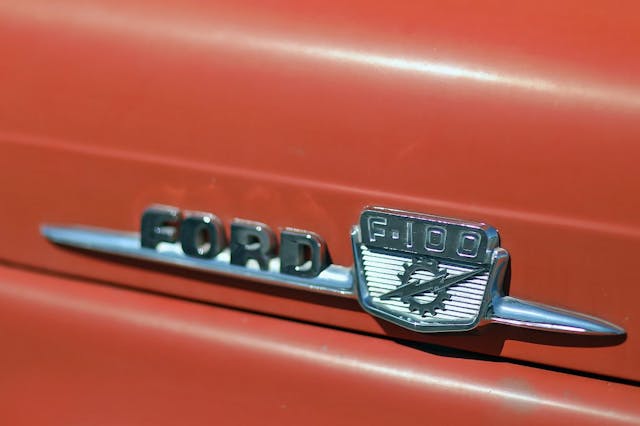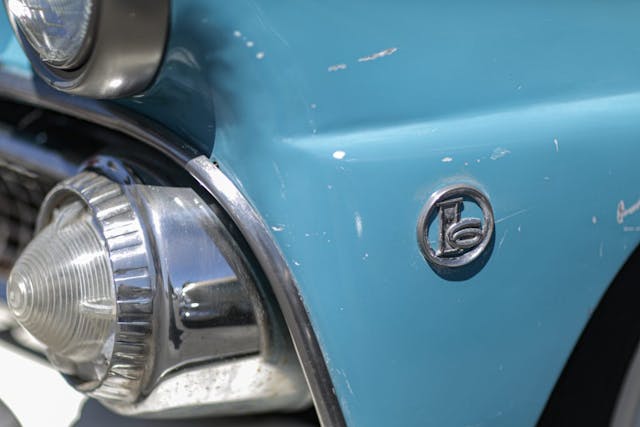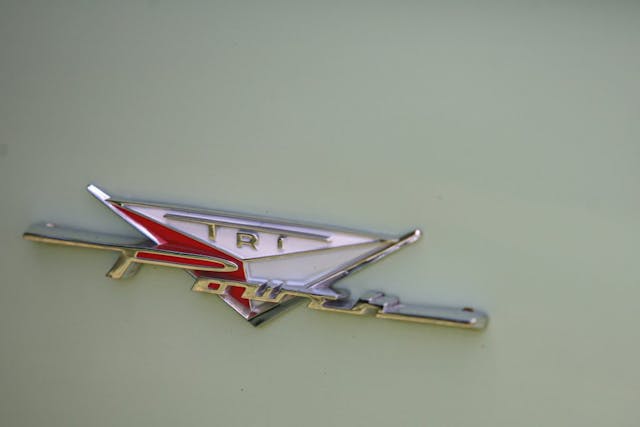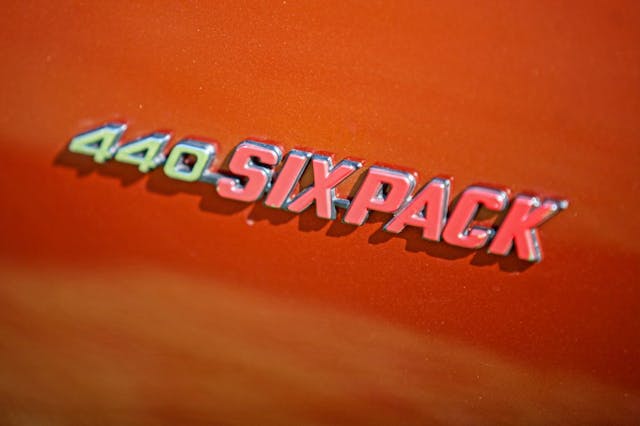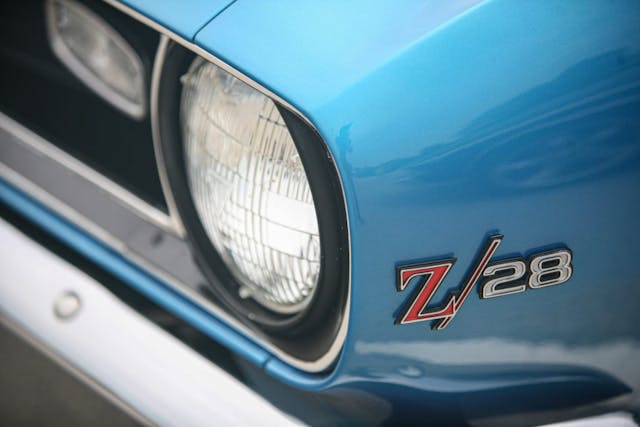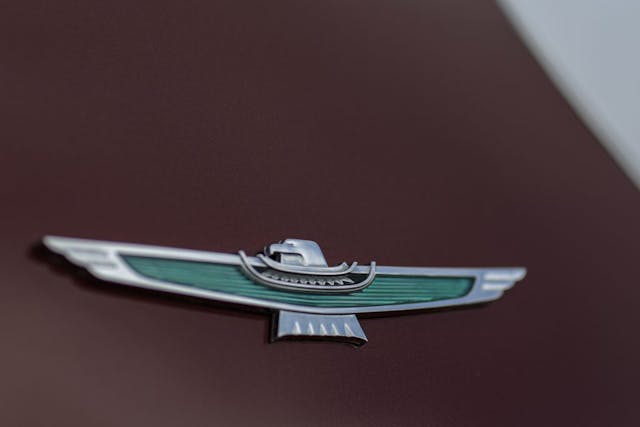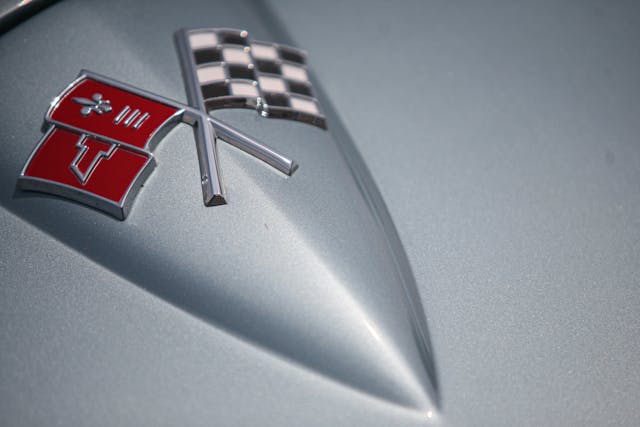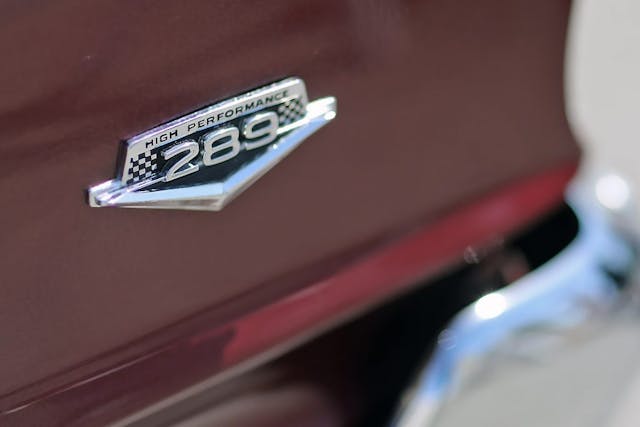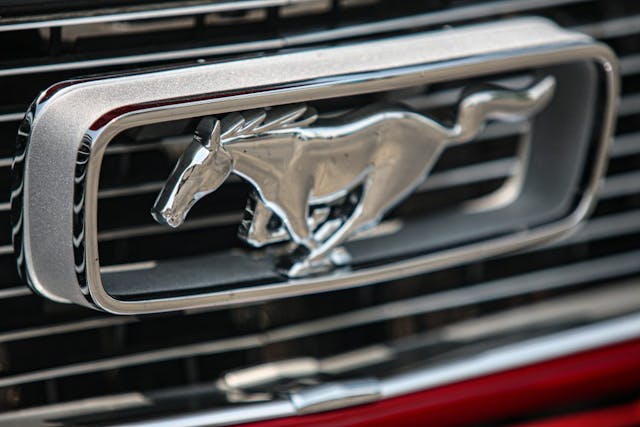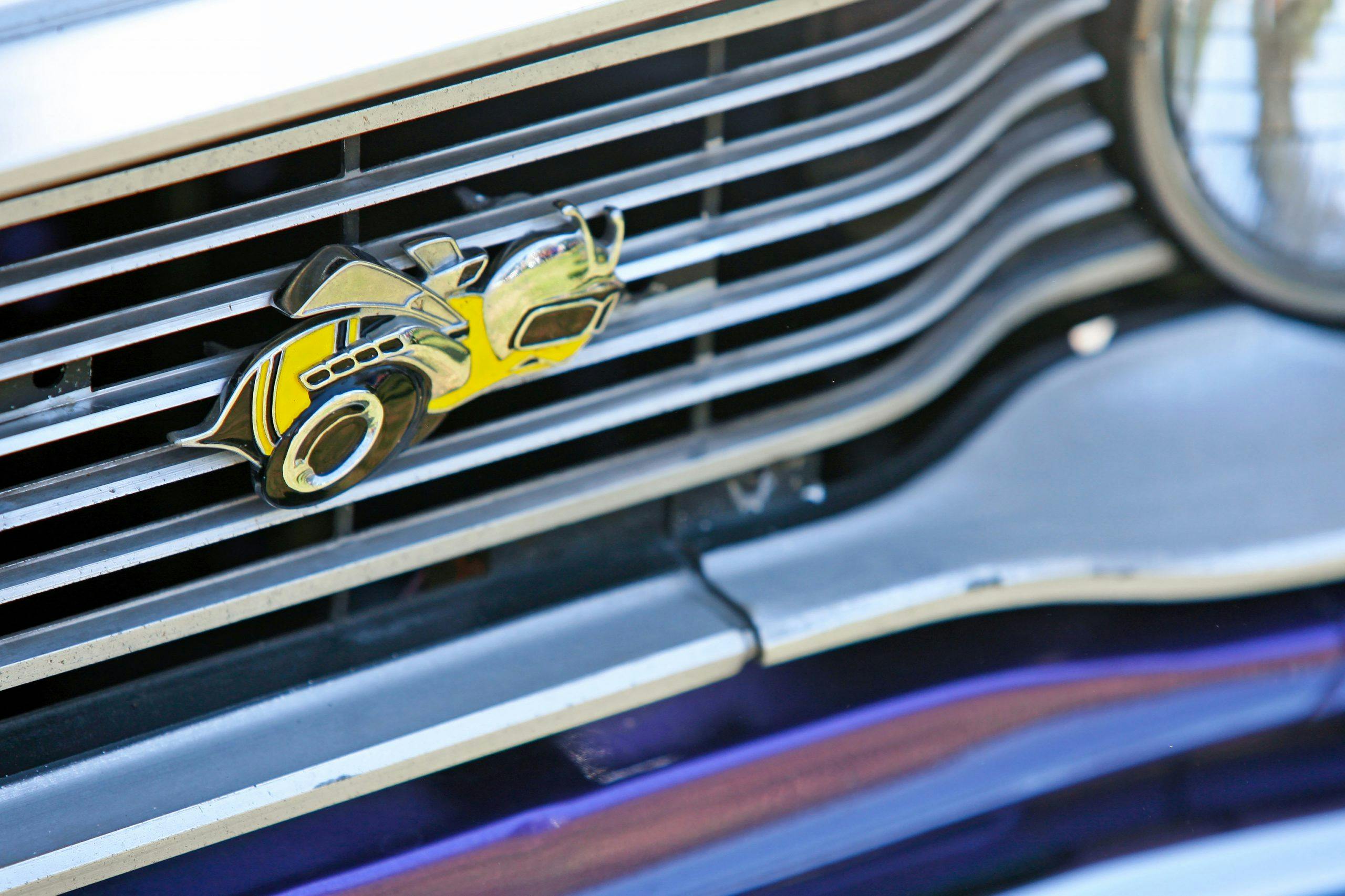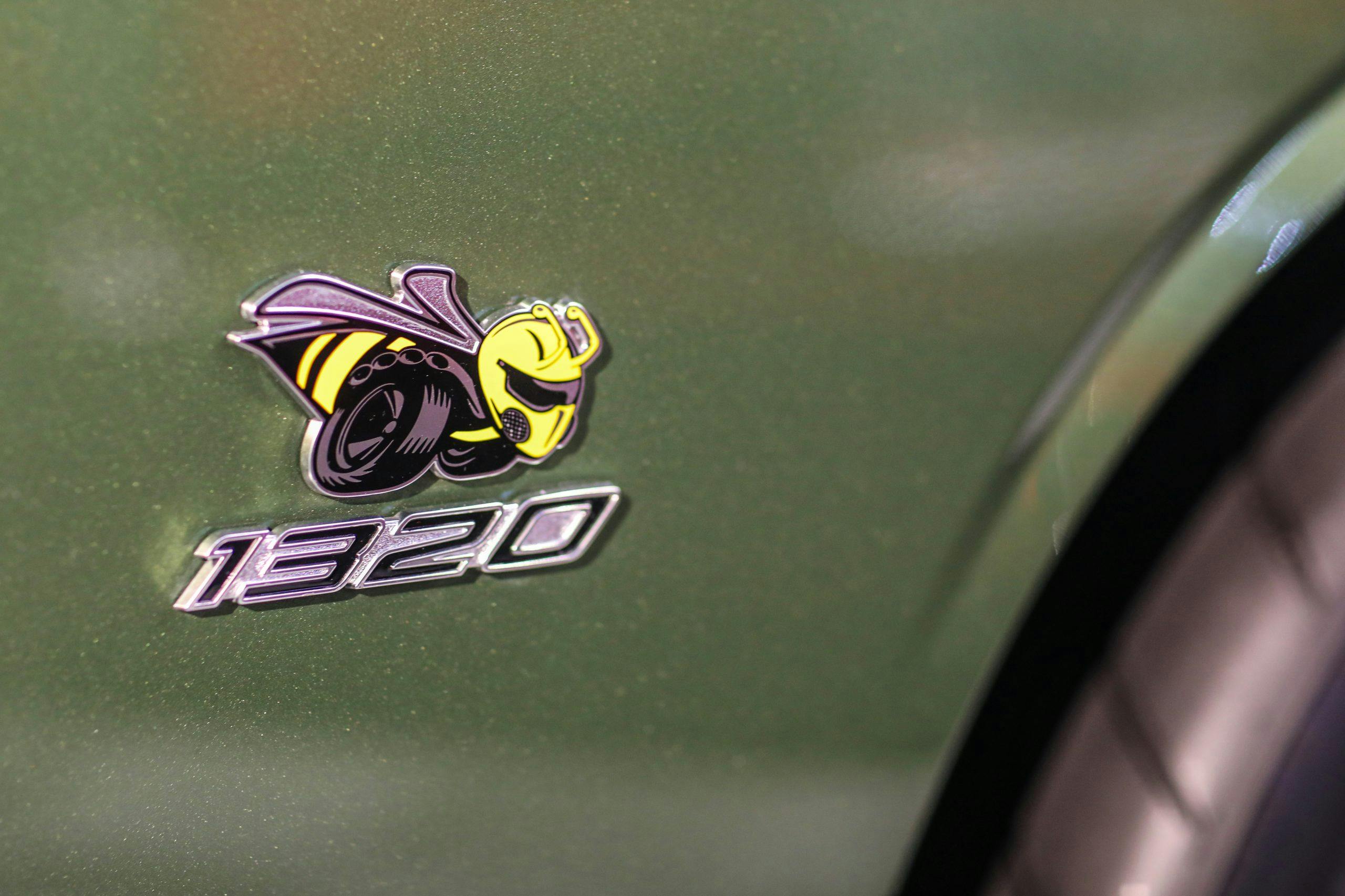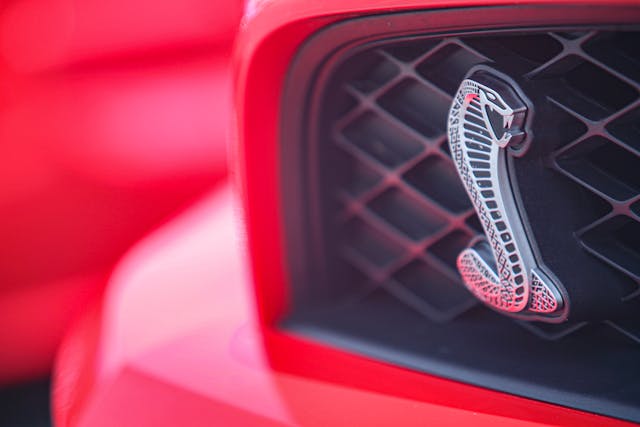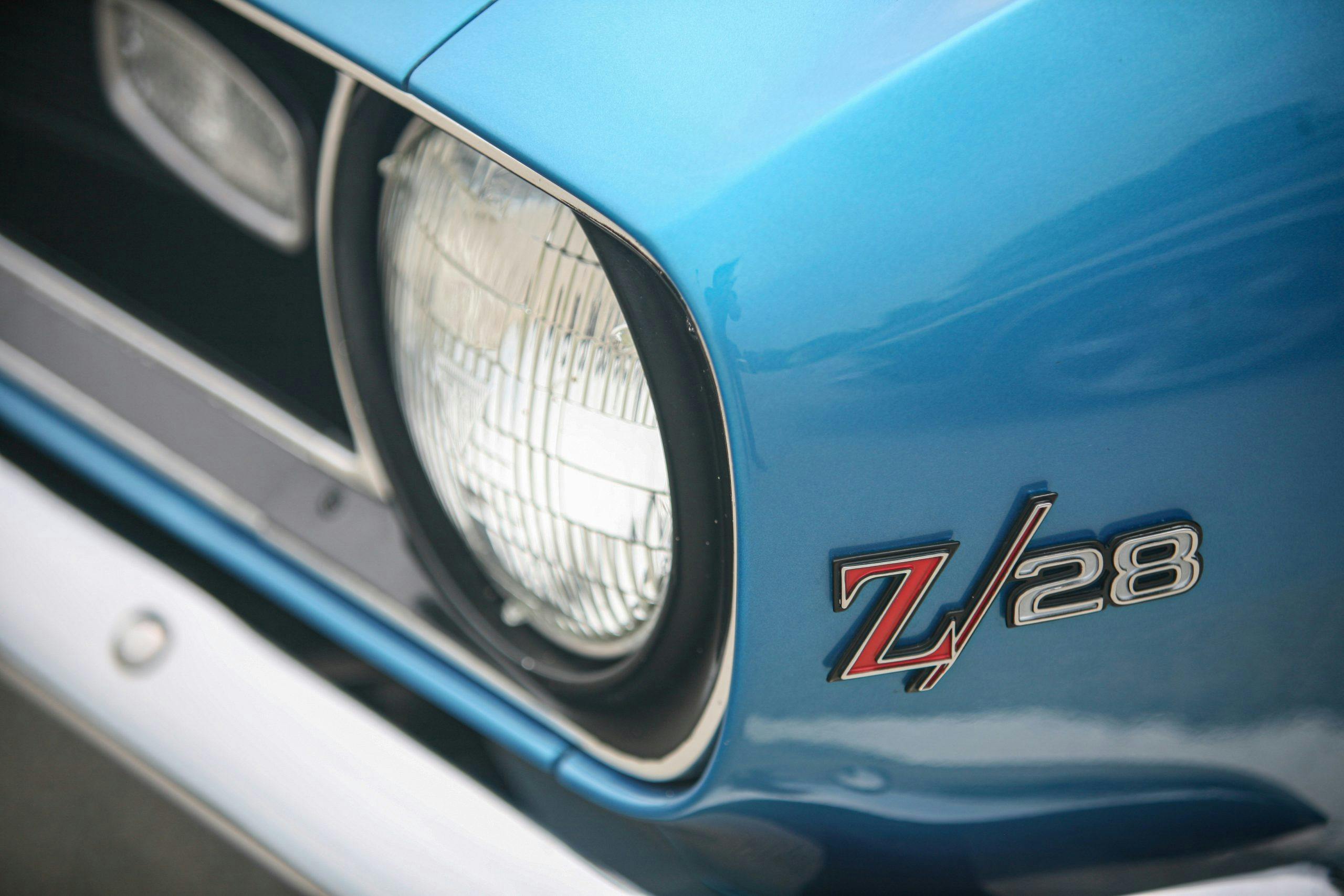Media | Articles
17 of our favorite American car emblems
Part of the charm of vintage cars lies in tiny aesthetic details that showcase the dedication of their designers. Modern cars may be faster, more reliable, and more likely to sip fuel than to guzzle it, but they often lack the personality of their retro predecessors. Emblems are one way that even run-of-the-mill economy cars were once given a splash of pizzazz—not to mention the high-power, stylish coupes that came packed to the gills (grilles?) with flashy trim.
Here are 17 of our favorite emblems from America’s Big Three, from the ’50s to today.
Before Ford had big engines to tout on its trucks’ fenders, this lighting bolt and gear emblem showed that its workhorses had the guts to get the job done by sheer torque.
Ford gave its 1955 and 1956 inline-six-equipped cars this simple “I6” badge. It’s not as striking or as bold as the high-performance emblems we’ll highlight later, but its elegant design highlights the unsung inline engine nicely.
It took us a second to realize just how clever this Ford V-8 emblem truly is. Found on 1955 and 1956 Fords, it not only proclaims its wearer is powered by a V-8 engine, but it also highlights the deep-skirt design that earned the engine its Y-block designation.
Marketplace
Buy and sell classics with confidence
Pontiac introduced its famous Tri-Power induction in 1957 and gave it an emblem to remember the following year. This badge, worn on the Bonneville in 1958, is pure mid-century excellence.
Skipping ahead a few years—don’t worry, we’ll come back—Dodge used this emblem to advertise that a big-block with a trio of Holley two-barrel carbs was under the hood. Not that the emblem was necessary; the sound of the secondary carbs opening up would let anyone in a two-block radius know what these fuselage-body Chargers were packing.
In 1967, the Z28 Camaro didn’t have any exterior badging that hinted at the Trans-Am-bred performance that was hiding under the sheetmetal. It wasn’t until 1968 that the Z/28 emblem touted Chevrolet’s Regular Production Option (RPO) code that added the high-revving 302 and track-hugging options to the F-body. The prominent placement at the leading edge of the fender and the perfect font selection are just icing on the cake.
Like Chevrolet, Pontiac also gave its F-body emblems to celebrate its RPO codes. In this case, the fourth-generation Trans Am with the desirable WS6 suspension package showed off with a red-and-chrome badge underneath the taillight.
The C-pillar emblem found on third-gen Thunderbirds doesn’t tell you anything about the engine or about the car’s performance. It is purely ornamental and nothing short of jewelry.
Checkered flags have a major role in some of our favorite emblems, and perhaps the most well-known lies in the Corvette’s crossed flags. The black-and-white flag highlights the Corvette’s racing pedigree, and its red partner, which carries the Chevy Bowtie and a fleur-de-lis, represents Louis Chevrolet’s French heritage.
Mercury flaunted its NASCAR involvement with this waving, checkered flag emblem found on the Cyclone in the mid ’60s. This one came from a 1965.
Until the 390 debuted in 1967, the top engine in the Ford Mustang was the high-performance 289 V-8. Known by its K-code option sheet name, the 271-hp small-block was the basis for Shelby’s early GT350s and sounded as good as it performed. The subtle fender emblem was one clue that the lightweight Mustang was packing some serious performance.
How could we mention Mustang without the iconic galloping pony? The nose-mounted mascot perfectly captures the free-running spirit of a wild horse.
Mercury’s pony car took a different approach, and we still love it. The Cougar was the more upscale variant, and its emblem looks like something lifted from an ancient Roman fresco, which is appropriate, considering the company’s namesake.
Mopar went all-in on fun when it designed its muscle cars. Look no further than the Super Bee emblem that is both anthropomorphic and mechanomorphic. It is simultaneously the driver and the machine, wearing a helmet and goggles as well as a scoop and exhaust headers. The classic ’60s Super Bee made a comeback as the Rumble Bee and can be found on modern Challengers.
Ford also had some mean-looking mascots. Plenty of muscle-bound Fords were offered with Cobra Jet engines and some of our favorites, including Torinos and Mustangs, wore Cobras on their fenders or grilles. We love the classic cobra, but this more modern version just looks like it’s up to no good, easily scoring it a place on our list.
Dodge used a pitchfork-wielding cartoonish imp as the Demon’s mascot, so when it came time to design the car’s logo, what better use for the pitchfork than the “m” in “Demon”?
When Chevrolet unleashed its LS7 V-8, the brand’s most powerful naturally aspirated engine ever, it announced the mill’s power to the world by way of this fender emblem. The C5 had a similar emblem bragging about its output, but we like the way this one sounds even better.
We could go on and on—there are decades’ worth of emblems from which to pull, and we already had to leave off some of our favorites. Let us know your picks in the comments below.

